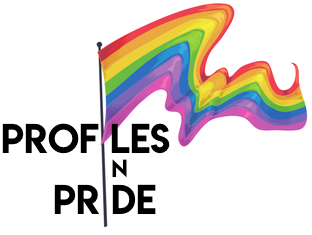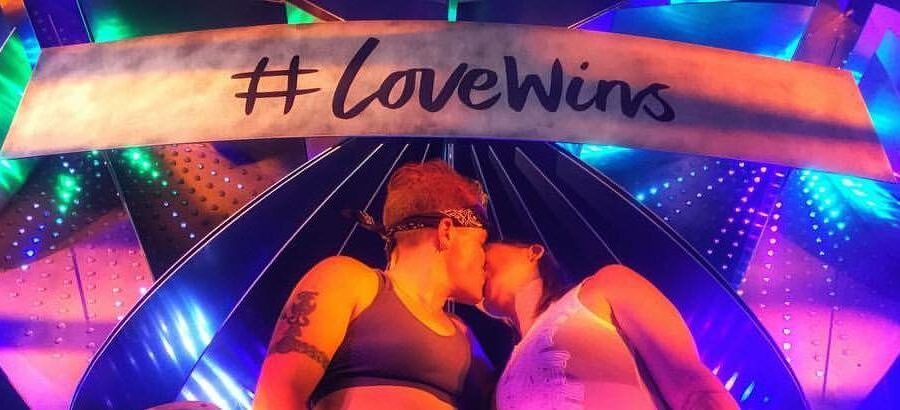Growing up in a devout Italian Catholic family, Cole Crum was taught that being gay was a grave sin. She didn’t feel particularly interested in boys or girls, until a girl kissed her when she was 12, and her whole world turned upside-down.
Crum spent years trying to grapple with her feelings of attraction to women, and eventually she came out to her family and friends as lesbian. While she was met with some support, other family members weren’t approving, so she expedited her plans to join the military.
Over time, Crum and her family were able to reconcile, and she then met her now fiancée, Diana Cezeaux. A week into their relationship, Cezeaux came up with an idea: she wanted to launch a brand called GAYTX — a play on ATX, a nickname for their city of Austin. Cezeaux not only wanted to offer classy merch for the LGBTQ community to express pride, but she also wanted to develop a new sizing system for clothing. Cezeaux had noticed how Crum and her “lesbro” friends wore male button-down shirts for comfort and style, but they hated the boxy fit intended for male-bodied people. Why not make a new sizing system for better-fitting masculine clothes for female-bodied people?
Crum, now 34, took the leap into entrepreneurship last summer, and threw herself into making the GAYTX vision a reality. Crum began working full-time on GAYTX in December, and she takes no paycheck, while Cezeaux works a full-time job to support them and the business. The pair is working hard to get GAYTX more involved in the Austin LGBTQ community and, as Crum puts it, “revolutionize the expression of pride” both in Austin and around the country.
This is Crum’s story of coming out as gay in a strict Catholic family, helping launch and run the GAYTX brand, and working to create a new LGBTQ sizing system for the community.
Profiles in Pride: When did you realize you were lesbian, and how did you come out?
Cole Crum: I come from a pretty strict, devout Italian Catholic family, which is a struggle in day-to-day life, because being gay doesn’t exist. It’s wrong, it’s bad, you’re going to hell. From my grandparents’ generation up, they still go to church three times a week.
So I struggled for a really long time, and truthfully, it was a weird development. Most kids hit puberty and all of a sudden have hormones, and they immediately identify their sexuality. They’re like, “I like girls” or “I like guys” but I didn’t. The best that I could define it was I was asexual for quite a few years. I just wasn’t interested in relationships or sex.
Then I transferred to a new school my eighth grade year and met some new friends, and I had a sleepover one night with some friends. We were playing truth or dare. One of them asked if I had ever considered if I was gay or if I had ever kissed a girl. I said, “No, I have no problem with it, but that’s not me.” That was the first time anyone had even brought it up in a context other than “it’s a sin and you’re going to hell.” It was one of those defining moments. It opened my eyes to, oh, wait, people talk about this? It’s not just a sin? It’s not just about going to hell?
The same group of friends invited me over a couple weeks later, and I was 12 years old. One of the girls asked me to go on a walk. We were just walking and talking, and she was like, “Hey Cole, I have to tell you something. I like you.” I said, “I like you too!” as innocent as can be, because my brain didn’t think that way.
She stops, grabs my arm, puts herself right in front of me, and puts her hands on my cheek so I was looking in her eyes. She says, “No, Cole, I like you.” That was that moment. Everybody has their realization moment, and that was mine. I saw her in front of me, but I looked in the background and I could literally see — and I’m not even speaking figuratively — the color spectrum of the world changing behind me. It was just like, “Oh shit, I like you too!” And I didn’t know it, because that wasn’t even an available option or feeling. It was so new to me.
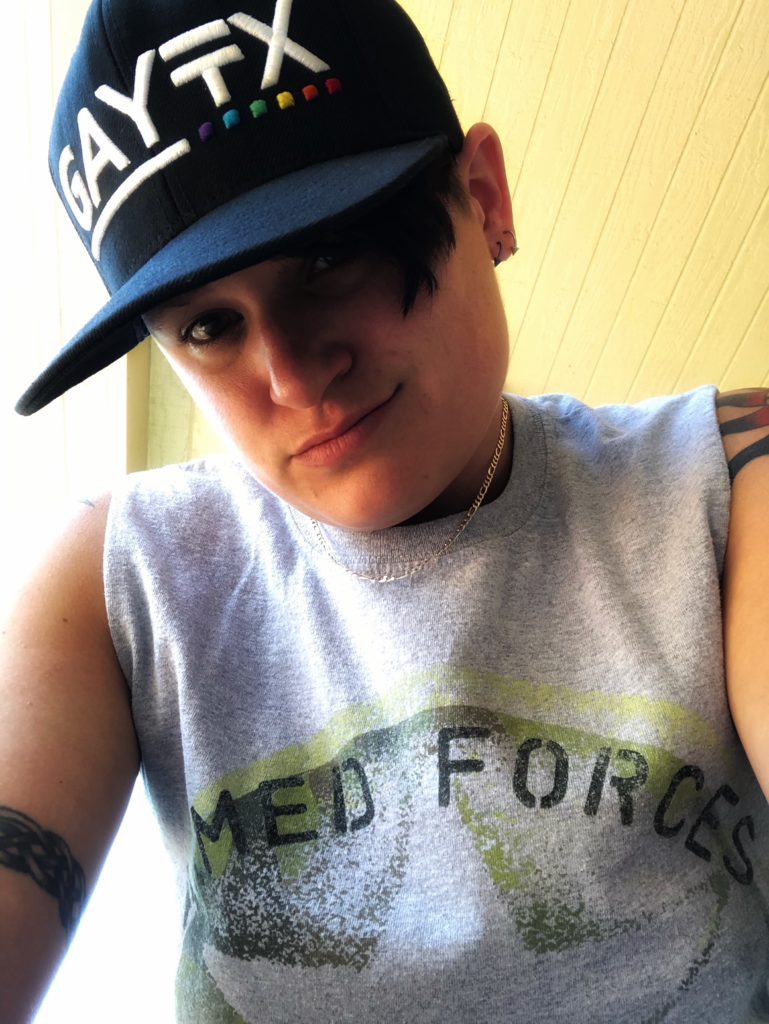
I dealt with that whole identity crisis from age 12-17, where I knew I liked women, but I knew I was supposed to like men. So I dated men and women from 12-17, sometimes simultaneously, but I could never bring myself to do anything sexual with men past kissing, and even that felt weird. When I was 17, I was finally like, alright Mom, I can’t anymore. I tried to be the good Catholic girl. I’ve looked in myself, I’ve explored, I’ve dated both, and I’m gay. I cannot be playing like this; it’s breaking me up.
She said, “OK, well just don’t tell anyone else in the family.” I told her I can’t do that, so I asked my grandmother to lunch. I came out to her and she cried, but through her tears she said, “No matter what you do, no matter who you are or where you go, I will always love you.” Which then put me into tears. So my mom was really accepting, and my grandma was as accepting as she could be, she just didn’t really want to talk about it.
But there were still members of my mom’s family that weren’t ready to come around and it created a rift in their relationship, so I got emancipated through the state of Texas at age 17. I joined the Army and went to Ft. Hood. I was there for two years and didn’t see or speak to my family for those two years because they wouldn’t accept me.
I got to a point in my life where I was tired of the abuse; I was tired of made to feel lesser than. I knew who I was, and I was proud of who I was, but nobody around me could see it or allow me to experience it. I took off until my second brother was born and then I came back home. I basically said, “Look, y’all haven’t seen me in two years; if you want to see me from here on out, you have to accept me for who I am.”
It hasn’t been an easy journey, but the journey led us to where we are today. My whole family loves Diana probably as much as they love me. They text each other on a regular basis, they talk, they bring each other gifts, they go do girly stuff together. It’s adorable. If we argue, my mom texts both of us and says, “Stop it, I love you, get over it.” They’re just as invested in her as they are in me. So it was a long journey, but we got there. We needed to go through that; everything happens for a reason.
PIP: How long did you stay in military?
CC: I did 3.5 years, then I had an honorable medical discharge. I was a week away from deploying with my unit, and we had to go through a final physical test to get cleared for deployment. I was top of my class on every stat you could find. I was actually set up to return from my deployment as an officer, and I failed the sit-ups, so they sent me to the doctor on base.
They misdiagnosed me so I took a week leave to come back to Austin, and because I was redflagged, I couldn’t deploy anyway. Both my parents are nurses, so they set me up with every medical specialist they could find. After the fourth doctor visit I found out I had uterine and ovarian cancer, so I couldn’t stay in the military after that.
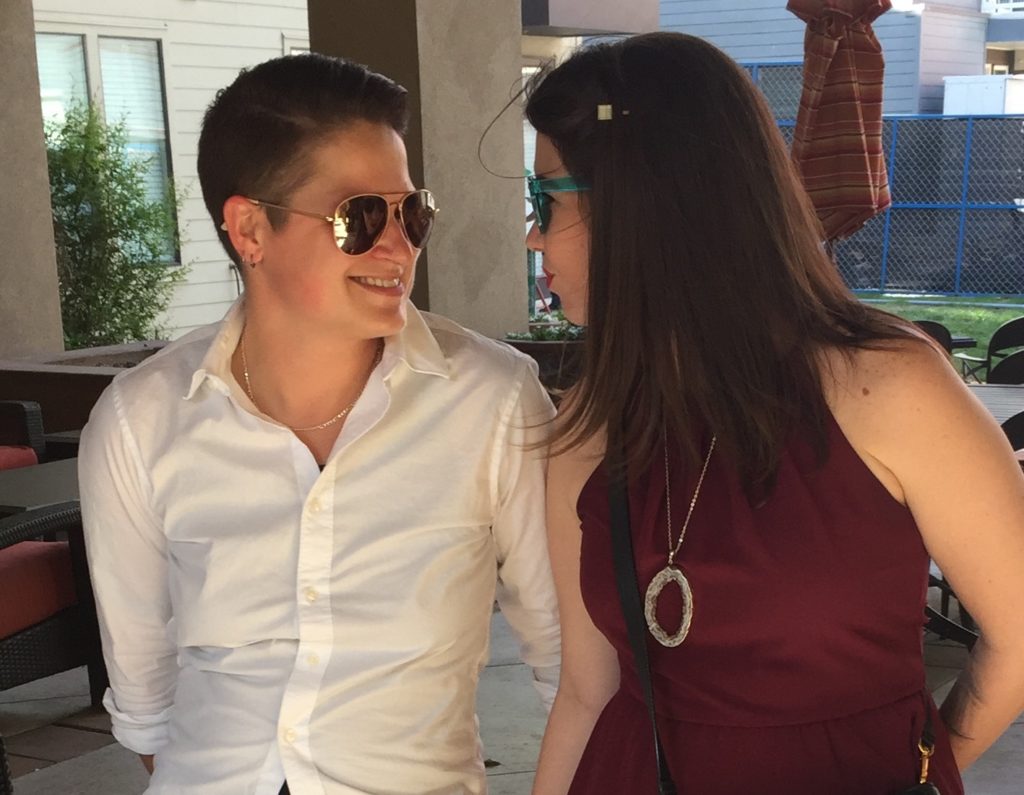
PIP: Oh wow! We’re glad you’re OK now. So did you help Diana start GAYTX, or did she already have it running?
CC: This was actually her idea; she started it in 2016. Amusingly enough, we had been dating for about a week and I was over at her place. We were just talking about companies, and we both have huge entrepreneurial spirits. She was like, “Hmm, I wonder if GAYTX is trademarked yet.” She looked online and it wasn’t trademarked, so she bought it right then. She got the domain right there, she hired a graphic designer for a logo — everything was done in an hour. I was like, who is this girl? I loved it!
But at that point we were both working full-time jobs. Last year in August I got laid off, and my house got taken out by Hurricane Harvey. Everything blew up at once, so I directed all of my efforts to my existing companies. At that point all we had was a logo for GAYTX and two very poorly made snapback and T-shirt samples. I asked how Diana would feel about me trying to see what I could do with it, because from the beginning I thought it was an amazing idea. She said to go for it, so I came on in November and kind of got myself acclimated with the needs, which was everything! We really started gaining ground and making moves in January of this year.
PIP: Are you focusing on the business full-time right now?
CC: Oh yeah, I’ve been full-time GAYTX since December. Diana has had the same full-time job since before I met her. She’s very successful in sales recruiting and is amazing at what she does. Because I am full-time in GAYTX, I haven’t taken a paycheck since August of last year, so she has to maintain her job since we’re also completely self-funded. We don’t have investors, we don’t do loans or anything like that, because this is so important to the community that we don’t want any outside influence coming in.
PIP: Are you focused on appealing to folks in Austin, to Texas, or nationwide?
CC: All of the above, actually. We’ve been doing all simultaneously. We’re currently working with some of the local Austin retailers like Prima Dora. We’re trying to get ourselves established in local brick-and-mortars.
We also have quite a few other state designs; we’ve definitely been speaking loudly to New York. We have a Stonewall pride tee, as well as “Pride started here” for them. We’ve also been working toward California as well. We’ll have a new graphic for San Francisco next quarter, so we’re kind of everywhere.
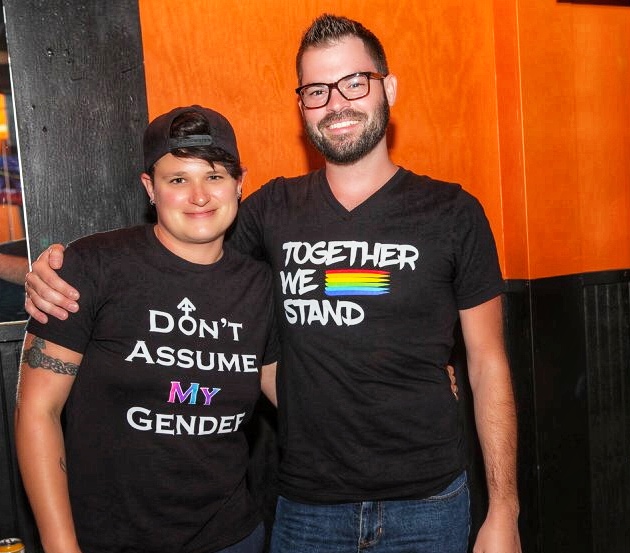
PIP: That’s great. Why does GAYTX exist; what is the brand’s purpose and vision?
CC: The why is actually huge. GAYTX, actually originally before graphic tees, before snapbacks, or any of this, the primary drive was to revolutionize the expression of pride, and that’s top to bottom.
We have our graphics, which are great, and speaking to the revolution of the expression, a lot of the graphics out there for the LGBT community are very crass or in your face or loud. Truthfully, even before this political turmoil, it hasn’t always been easy for people to wear these loud and proud designs out in public. Even if you want to rep your pride, it’s often some crass designs that will get more negative attention. We’ve been trying to focus our graphics on our history, where we came from, what it means to be prideful, and really empowering our community.
But again, before all that, the original idea is we’re essentially creating a new sizing system for the LGBT community for apparel. It’s taking a long time to come into fruition, but it’s still going. Diana had a lot of what we call “lesbro” friends — basically people like me. We’re female, we identify as lesbian, but we’ll wear guys clothes because it’s comfortable, not even just for image but literally for the comfort of the fit. However, when we try to dress up, we’ll put on a button-down, but man, my shoulders are boxy, it doesn’t fit here, it’s too tight here, the flow is weird, it’s not long enough. You don’t really feel confident in what you’re wearing.
And you don’t feel confident in what you’re wearing, you won’t feel confident in yourself. One day she was like, “Guys, it’s because you’re wearing a man’s shirt — it’s not gonna fit right.” With all of that, and then I think having me in her life complaining about it 24/7, she came up with the concept of a shirt that has a masculine look and a feminine fit.
That’s been our hardest project to tackle, only because it’s been closest to our heart. We want to make sure we do it right. We worked with a designer out of El Paso who is a part of the community. We have received our patterns for our first long-sleeve collared formal shirt, and we’re currently looking into manufacturers for that. I’m hoping that we’ll see at least a pre-launch by next year.
PIP: That’s amazing! That reminds me of how “Queer Eye” features Bindle and Keep, which specializes in masculine clothing for people assigned female at birth.
CC: I love Bindle and Keep! There’s a documentary about them called “Suited”; I don’t cry often, but it made me cry. There are resources out there that are very similar to that company, but the problem is it’s all custom tailoring. This can get pricey. They are a great company and definitely do try to keep it within an affordable range, but it’s not going to be able to hit our entire community. I can’t afford to get a custom tailored suit, and neither can many people in our community.
All of the turmoil that we have to experience just in our day-to-day lives, it’s going to make it harder for us to find success. A bigger percentage of our population is under the mean income just because the issues we deal with. We’re trying to find a way to make it bigger and better. We have small, medium, and large. We want that same ability, but to be able to be across the board.
So we’re starting with what we know, which is the lesbian community. But when I had gotten one of my sample patterns in from my designer for this shirt and we were modeling the small size off of my measurements, one of my gay friends came and he tried on the shirt. He has a completely different build from me, he’s 6’3” maybe — much taller. We weren’t even thinking this would work for men. He tried it on and said, “This fits like a glove, I look sexy as fuck, when are they coming in?” I thought, OK cool, this is the kind of sizing we’re targeting. Yeah, this is made for the lesbros, but it’s body type more than anything. So we’re trying to get to where we can get it to everyone for an affordable price.
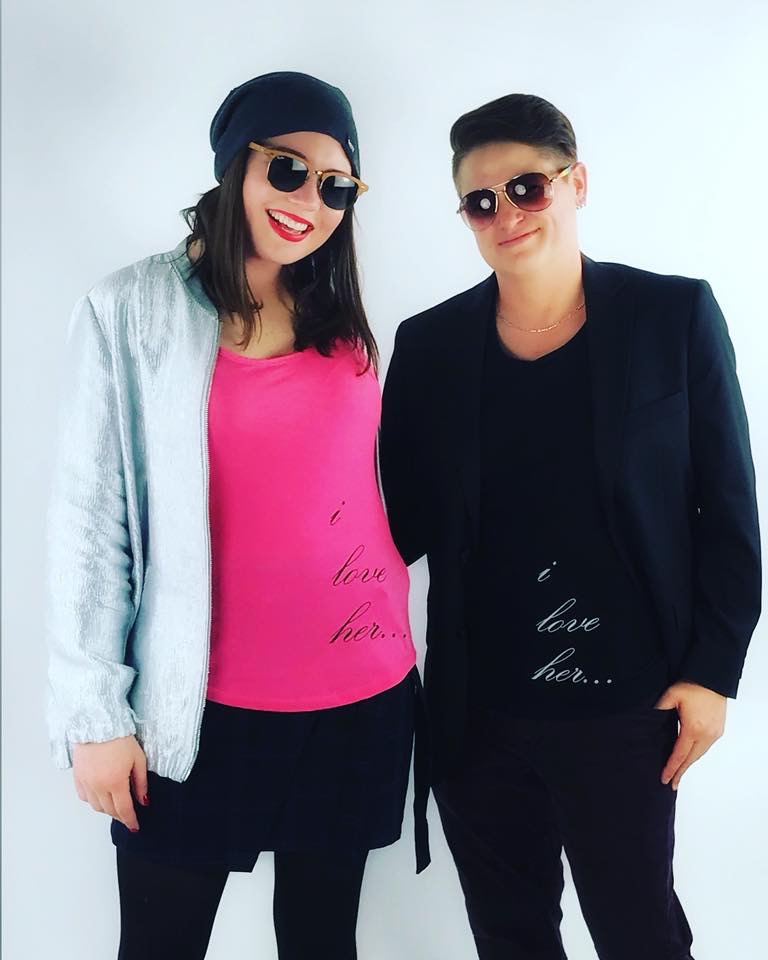
PIP: I love that you’re creating a new LGBTQ sizing system! Do you sometimes find yourself or your business serving as a resource for the community in other ways?
CC: Yes, we’ve had people reach out through our social media on the GayTX platform, saying, “I don’t know where else to turn, here’s what I’m going through.” And I’ll either talk them through it and/or direct them to The Trevor Project. They’re one of the primary nonprofits that we support. It’s not one of our main things, but we’ve put it out there on our social media numerous times: “If you’re ever in need, here’s The Trevor Project’s number. If you’re not comfortable and you want to talk one-on-one, here’s my number.” We’re here for the community.
It can be a little bit hard for the public to see us for who we are. One of the biggest questions we get before anything about us or our merch is “how are you helping the community?” Nobody knows we’re self-funded. Nobody knows I haven’t taken a paycheck in a year. Nobody knows what goes on behind the scenes. But every event we do, 100% of our tips go to The Trevor Project. We’re linking up with Out Youth to start developing a partnership instead of just doing one-off events. We’ve had a few meetings and we’re going to get in and see how we can help get their message out there a little bit more more.
I’m one person at the end of the day, so everything you see that we are, from the website, the graphics — I created them all myself. I had to teach myself graphic design, and now I’ve produced over 100 graphic designs for us. Sourcing a designer for patterns and a manufacturer for the material; everything we do is one step at a time, one day at a time.
But we’re now at a point where we now have our foundation, and we’re trying to get out in the community. We’re trying to hook up with local retailers. We’ve been working with Lesbutante & and The Boss for about eight months now and were at their Pride events. People think we’re just pushing tees and graphics. No, they’re community relevant designs. We’re definitely trying to get ourselves out there and just be there for people. We’re doing everything we can.
Keep up with GAYTX on Instagram @gayTXdesigns and on Facebook.
